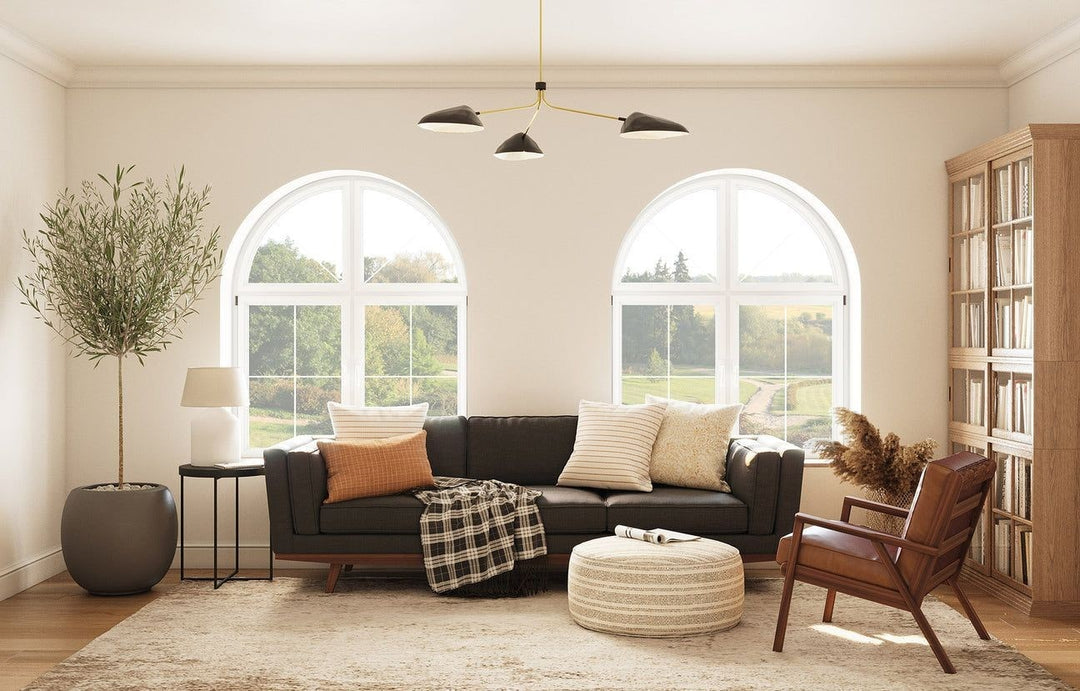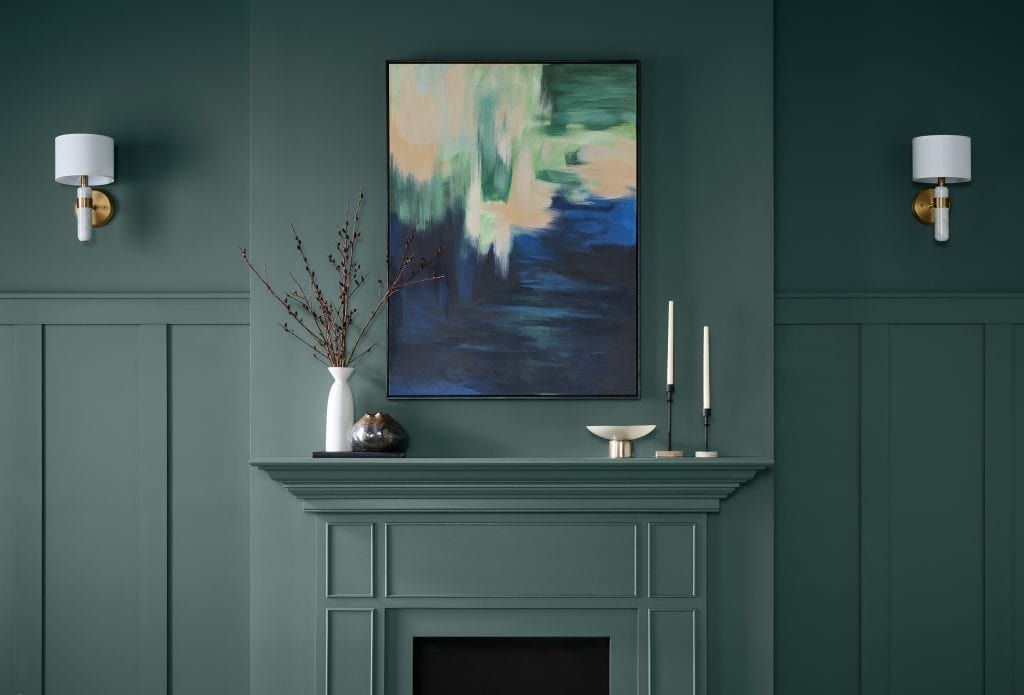Scandinavian Style vs Mid-Century Modern: Key Differences
Ah, Scandinavian and Mid-Century Modern. Two design styles that consistently top the lists of popular home design styles in 2025 are gracing magazine covers and Pinterest boards alike. They both champion simplicity, clean lines, and functionality, leading many to wonder: What exactly are the differences, and how do I choose between Scandinavian and mid-century modern for my own home?
Understanding the nuances between these two iconic styles is key to creating a cohesive and stylish space. Think of this as your friendly guide to navigating the world of Scandinavian vs mid-century modern design. We'll break down the core elements, explore the subtle (and not-so-subtle) differences in interior design styles, and help you discover which aesthetic best reflects your personality and lifestyle. Whether you're drawn to the cosy warmth of Scandinavian style furniture or the retro-chic vibe of mid-century modern furniture, this blog will equip you with the knowledge to create a home that's both beautiful and functional. So, let’s get started and discover the differences in interior design styles to make your home a true sanctuary.
Core Philosophies: Warmth vs. Functionality
At their heart, both Scandinavian and Mid-Century Modern design share a commitment to simplicity and functionality. However, their driving philosophies differ slightly, influencing their overall aesthetic.
Scandinavian:
Rooted in the Nordic concept of hygge, Scandinavian design emphasises cosiness, warmth, and a connection to nature. It's about creating a serene and inviting space that promotes well-being and a sense of calm. Scandinavian interior design trends tend to focus on maximising natural light and creating a peaceful atmosphere.
Mid-Century Modern:
Emerging from the post-World War II era, Mid-Century Modern design prioritises clean lines and a futuristic optimism. It's about celebrating innovation in materials and techniques while creating practical and stylish living spaces. The mid-century modern design guide will tell you it's about clean lines, practical yet elegant living spaces, and embracing innovation.
Colour Palette: Light vs. Bold
One of the most noticeable differences between Scandinavian and Mid-Century Modern design lies in their colour palettes.
Scandinavian: Typically features a light and airy palette of neutrals, including whites, creams, greys, and pale blues. These colours create a sense of spaciousness and reflect natural light, which is particularly important in the often-dark Nordic winters. Accents of natural wood tones and subtle pops of colour (think muted greens or dusty pinks) add warmth and visual interest.
Mid-Century Modern: Favours a bolder and more vibrant palette, incorporating earthy tones such as avocado green, mustard yellow, burnt orange, and teak brown. While neutrals are still present, they often serve as a backdrop for bolder accent colours, creating a more dynamic and visually stimulating environment. Geometric patterns and graphic prints also contribute to the bold aesthetic.
Furniture: Organic Shapes vs. Geometric Forms
The furniture styles associated with Scandinavian and Mid-Century Modern design reflect their differing philosophies and colour palettes. The Scandinavian vs. mid-century furniture conversation will delve into the nuances of shapes and forms.
Scandinavian:
Furniture often features soft, organic shapes, natural materials, and a focus on comfort. Think of gently curved sofas upholstered in natural fabrics, such as wool or linen, simple wooden chairs with woven seats, and minimalist storage solutions crafted from light-coloured woods like birch or pine. Pieces are typically unadorned and emphasise functionality over ornamentation.
Mid-Century Modern:
Furniture features geometric forms, clean lines, and a celebration of new materials, including moulded plywood, fibreglass, and plastic. Think of iconic designs like the Eames lounge chair, the Saarinen tulip table, and streamlined credenzas with sleek metal legs. Pieces often feature exposed legs and emphasise form as much as function.
Materials: Natural vs. Manufactured
The materials used in Scandinavian and Mid-Century Modern design further highlight their contrasting aesthetics.
-
Scandinavian: Prioritises natural materials, such as wood, wool, linen, leather, and sheepskin. These materials create a sense of warmth, texture, and connection to nature. Natural light is also a key element, often maximised through large windows and minimal window coverings.
-
Mid-Century Modern: While natural materials are still used, Mid-Century Modern design also incorporates manufactured materials, such as moulded plywood, fibreglass, plastic, and metal. These materials allowed designers to explore new forms and techniques, pushing the boundaries of furniture design.
Accessories: Minimal vs. Expressive
Accessories play a crucial role in completing the look of both Scandinavian and Mid-Century Modern interiors, but their approach differs significantly.
-
Scandinavian: Emphasises minimalism and functionality. Accessories are carefully chosen to add warmth, texture, and personality without cluttering the space. Think of cosy throws, soft cushions, candles, natural greenery, and a few carefully curated objects.
-
Mid-Century Modern: Allows for more expressive accessories, such as geometric art prints, colourful ceramics, vintage lamps, and sculptural objects. Accessories are used to add pops of colour, visual interest, and a sense of personal style. Read more about Modern bedroom ideas.
How to Choose Between Scandinavian and Mid-Century Modern
So, with all these differences in mind, how do you choose between Scandinavian and mid-century modern? Here are some questions to ask yourself:
-
What kind of atmosphere do you want to create in your home? Do you prefer a serene and calming space or a more energetic and vibrant one?
-
What colours are you drawn to? Do you prefer light and airy neutrals or bolder, more saturated hues?
-
What type of furniture do you find most comfortable and appealing? Do you prefer soft, organic shapes or more angular, geometric forms?
-
How much clutter do you prefer in your home? Do you prefer a minimalist aesthetic or a more expressive and eclectic style?
-
What is your budget? Mid-Century Modern furniture and decor can be more expensive due to the iconic status and collectable nature of specific pieces.
Can You Mix and Match? Absolutely!
While understanding the key differences between Scandinavian and Mid-Century Modern design is essential, don't feel confined by rigid rules. One of the best ways to create a unique and personal space is to blend elements of both styles.
For example, you could combine a Scandinavian-style sofa with a Mid-Century Modern coffee table and art prints. Or, create a predominantly Scandinavian space with pops of Mid-Century Modern colour and accessories.
The key is to find a balance that works for you and creates a cohesive and harmonious aesthetic.
The Future of These Styles: Evolving Trends
While Scandinavian and Mid-Century Modern design have proven their timeless appeal, they continue to evolve to reflect changing trends and lifestyles. Keep an eye on these developments:
Sustainability Focus: Both styles are increasingly embracing sustainable materials and practices. Look for furniture made from recycled materials, responsibly sourced wood, and eco-friendly finishes.
Technological Integration: Expect to see a more seamless integration of technology into furniture design, including built-in charging stations, bright lighting, and hidden storage solutions.
Global Influences: Scandinavian and Mid-Century Modern design are increasingly incorporating influences from other cultures, resulting in more eclectic and personalised spaces. Consider adding a touch of Moroccan flair to a Scandinavian living room or combining it.
Biophilic Design: The trend of bringing nature indoors is becoming increasingly prominent, with a growing emphasis on the use of plants, natural light, and organic materials.
Emphasis on Comfort and Wellness: The focus on creating comfortable and restorative spaces is driving the trend towards softer shapes, more luxurious fabrics, and ergonomic furniture designs.
Embracing Your Style
Ultimately, the best approach to interior design is to embrace your personal style and create a home that you love. Whether you're drawn to the cosy warmth of Scandinavian design, the retro-chic vibe of Mid-Century Modern, or a blend of both, understanding the key differences between these styles will enable you to make informed choices. Visit Hudson Furniture for more information.
FAQs
Are there specific types of plants that complement Scandinavian or Mid-Century Modern design particularly well?
Absolutely! For Scandinavian spaces, consider plants with clean lines and minimalist forms, such as snake plants (Sansevieria), ZZ plants (Zamioculcas zamiifolia), or fiddle leaf figs (Ficus lyrata).
I have a small apartment. Can I still incorporate Scandinavian or Mid-Century Modern design effectively?
Definitely! Both styles are well-suited for small spaces due to their emphasis on functionality and simplicity. In a Scandinavian space, focus on maximising natural light, using light-colored furniture, and decluttering ruthlessly.
How can I incorporate vintage or antique pieces into a Scandinavian or Mid-Century Modern design without clashing?
Integrating vintage or antique pieces can add character and personality to your space. The key is to choose pieces that share similar design principles with the overall style.
Are there any specific artwork styles or artists that are particularly well-suited for Scandinavian or Mid-Century Modern interiors?
Yes! For Scandinavian interiors, consider abstract art with muted colours and organic forms, nature photography, or minimalist line drawings. Artists like Hilma af Klint or Agnes Martin can be a good fit.
How can I create a cohesive look when mixing Scandinavian and Mid-Century Modern elements in the same room?
Creating a cohesive look when mixing these styles requires careful consideration of color, texture, and form. Start by choosing a dominant colour palette, such as a neutral base with pops of colour, and stick to it throughout the room.




